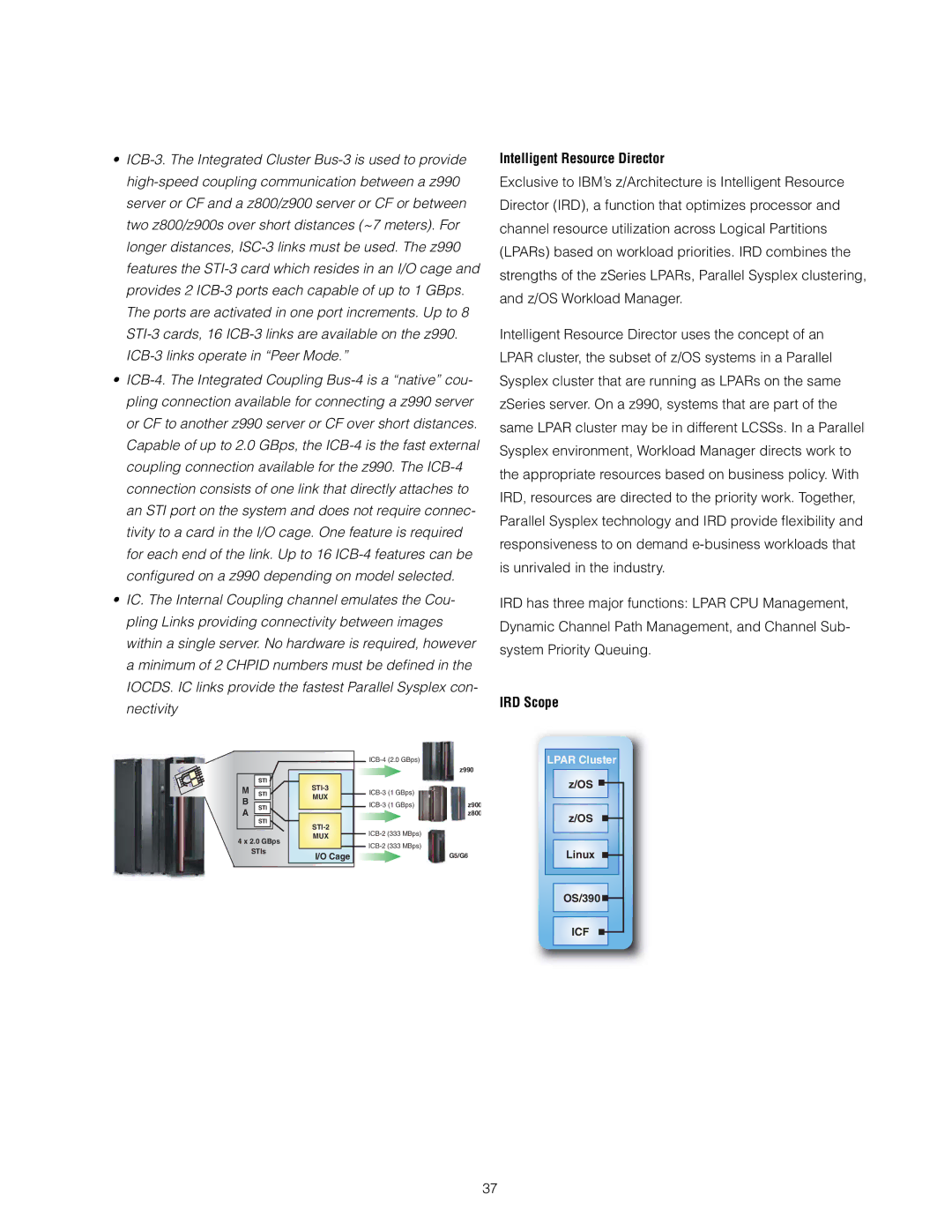
•
•
•IC. The Internal Coupling channel emulates the Cou- pling Links providing connectivity between images within a single server. No hardware is required, however a minimum of 2 CHPID numbers must be defi ned in the IOCDS. IC links provide the fastest Parallel Sysplex con- nectivity
Intelligent Resource Director
Exclusive to IBM’s z/Architecture is Intelligent Resource Director (IRD), a function that optimizes processor and channel resource utilization across Logical Partitions (LPARs) based on workload priorities. IRD combines the strengths of the zSeries LPARs, Parallel Sysplex clustering, and z/OS Workload Manager.
Intelligent Resource Director uses the concept of an LPAR cluster, the subset of z/OS systems in a Parallel Sysplex cluster that are running as LPARs on the same zSeries server. On a z990, systems that are part of the same LPAR cluster may be in different LCSSs. In a Parallel Sysplex environment, Workload Manager directs work to the appropriate resources based on business policy. With IRD, resources are directed to the priority work. Together, Parallel Sysplex technology and IRD provide fl exibility and responsiveness to on demand
IRD has three major functions: LPAR CPU Management, Dynamic Channel Path Management, and Channel Sub- system Priority Queuing.
IRD Scope
| STI | ||
M | STI | ||
MUX | |||
B |
| ||
STI |
| ||
A |
| ||
| STI | ||
|
| ||
4 x 2.0 GBps | MUX | ||
| |||
| STIs | I/O Cage | |
|
| ||
z990
z800
G5/G6
LPAR Cluster
z/OS ![]()
z/OS
Linux
OS/390 ![]()
ICF
37
